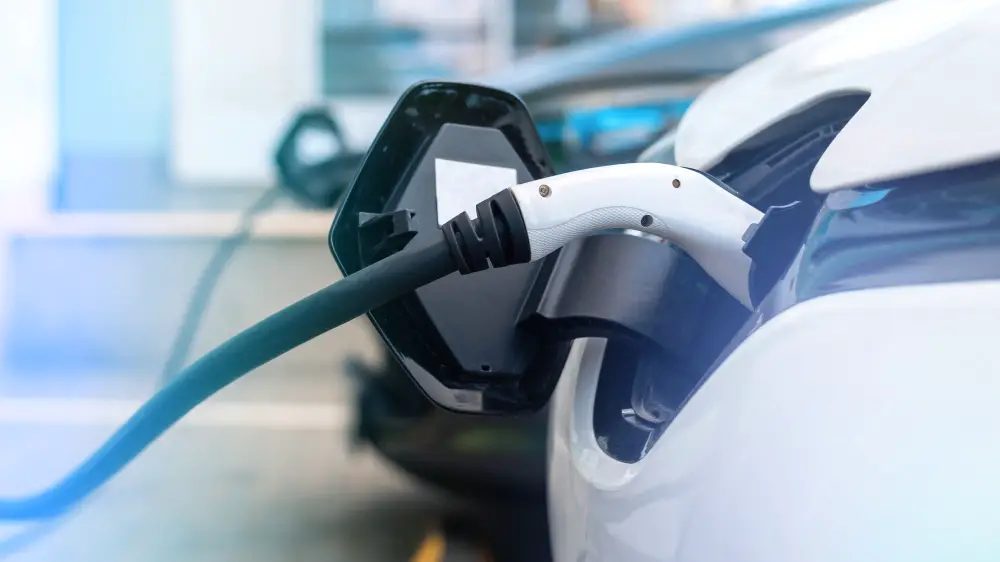Electric cars, also known as electric vehicles (EVs), are becoming increasingly popular as people look for more sustainable and environmentally friendly ways to travel.

In this article, we will discuss everything you need to know about electric cars, including how they work, their benefits and drawbacks, and the different types available.
Key Takeaways
- Electric cars are powered by electric motors that use rechargeable batteries, converting electrical energy into mechanical energy for propulsion.
- Benefits of electric cars include high energy efficiency, zero emissions, and lower operating costs compared to traditional gasoline vehicles.
- Drawbacks include limited driving range, longer charging times, and higher upfront purchase costs.
How Do Electric Cars Work?
Electric cars work by using an electric motor instead of an internal combustion engine. The electric motor is powered by a large traction battery pack that must be plugged into a wall outlet or charging equipment.
The battery pack stores energy gathered from the grid during charging, which is then used to power the vehicle’s motor and all other electrical components.
Because electric cars run on electricity, they emit no exhaust from a tailpipe and do not contain the typical liquid fuel components, such as a fuel pump, fuel line, or fuel tank.
Here are the main components of an electric car:
- Battery: The battery provides power to the electric motor and must be charged by plugging the car into a wall outlet or charging equipment.
- Charge port: The charge port allows the vehicle to connect to an external power supply in order to charge the traction battery pack.
- DC/DC converter: This device converts higher-voltage DC power from the traction battery pack to the lower-voltage DC power needed to run vehicle accessories and recharge the auxiliary battery.
- Electric traction motor: Using power from the traction battery pack, this motor drives the vehicle’s wheels.
- Power electronics controller: This unit manages the flow of electrical energy delivered by the traction battery, controlling the speed of the electric traction motor and the torque it generates.
- Inverter: The inverter converts the DC power from the battery pack to AC power that is used to power the electric motor.
- Regenerative braking system: This system captures energy that is normally lost during braking and uses it to recharge the battery pack.
Electric cars are becoming more popular due to their environmental benefits and technological advancements. They have fewer moving parts than a gas vehicle and generally require less maintenance.
Electric cars are powered by storing energy from the electrical grid in batteries, then using that energy to drive electric motors that make the car go.
Benefits of Electric Cars
An EV would cost only $1.22 in energy to travel the same distance as a gas-powered car that costs $10.87 in gasoline.
Bankrate
There are several benefits to owning an electric car, including:
- Energy efficiency: EVs directly convert more than 85 percent of electrical energy into mechanical energy, compared to less than 40 percent for a gas combustion engine. This means that an electric vehicle is roughly three times as efficient as an ICE vehicle.
- Environmental friendliness: Electric cars produce zero emissions, which means they are much better for the environment than traditional gas-powered cars.
- Lower operating costs: EVs are cheaper to operate than gas-powered cars. According to Bankrate, an EV would cost only $1.22 in energy to travel the same distance as a gas-powered car that costs $10.87 in gasoline.
- Less maintenance: Electric cars have fewer components than gas-powered cars, so they often have lower maintenance costs because they don’t require fluid changes or tuneups.
Drawbacks of Electric Cars
While electric cars have many benefits, there are also some drawbacks to consider, including:
- Limited range: EVs typically have shorter driving ranges per charge than gas-powered cars have per tank of gasoline. Most new battery electric vehicles (BEVs) are designed to travel between 110 and over 300 miles on a fully charged battery, depending on the model.
- Long charging times: Charging an electric car can take several hours, depending on the charging station and the car’s battery capacity.
- Higher upfront costs: EVs are generally more expensive to purchase than gas-powered cars. According to Consumer Reports, the average new EV sells for over $60,000, which is tens of thousands more than the average gas or hybrid car.
Types of Electric Cars
There are three main types of electric cars:
- Battery electric vehicles (BEVs): These vehicles have a battery that is charged by plugging the vehicle into charging equipment. They always operate in all-electric mode and have typical driving ranges from 150 to 400 miles.
- Plug-in hybrid electric vehicles (PHEVs): These vehicles can travel between 20 and 40 miles on electricity alone, and then will operate solely on gasoline, similar to a conventional hybrid.
- Hybrid electric vehicles (HEVs): These vehicles are powered by an internal combustion engine and one or more electric motors that use energy stored in a battery. The vehicle is fueled with gasoline to operate the internal combustion engine, and the battery is charged through regenerative braking, not by plugging in.
Conclusion
EVs are becoming increasingly popular as people look for more sustainable and environmentally friendly ways to travel. While they have some drawbacks, such as limited range and higher upfront costs, the benefits of owning an electric car, including energy efficiency, environmental friendliness, and lower operating costs, make them an attractive option for many drivers.
As more automakers introduce new electric options to their lineup, we can expect to see even more diversity in the electric car market in the coming years.
Follow AllCarFix for more update in the car industry!
